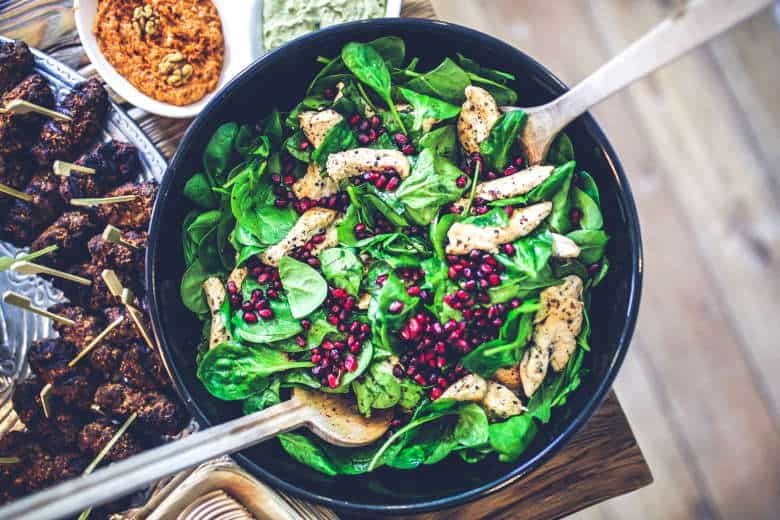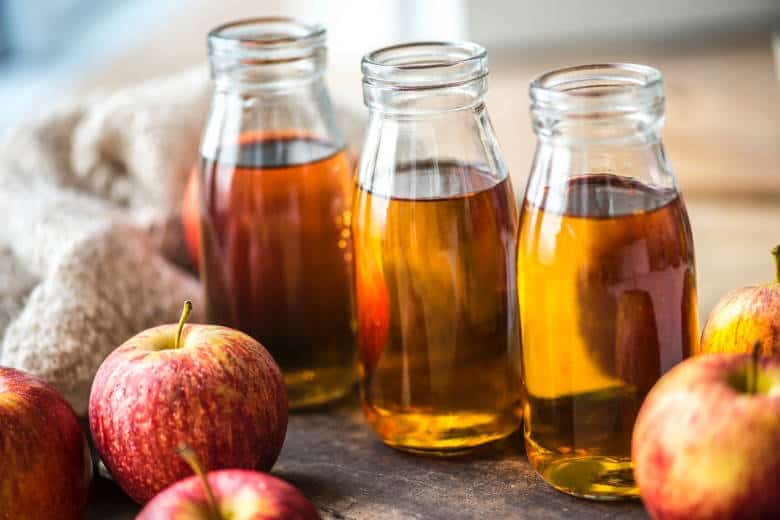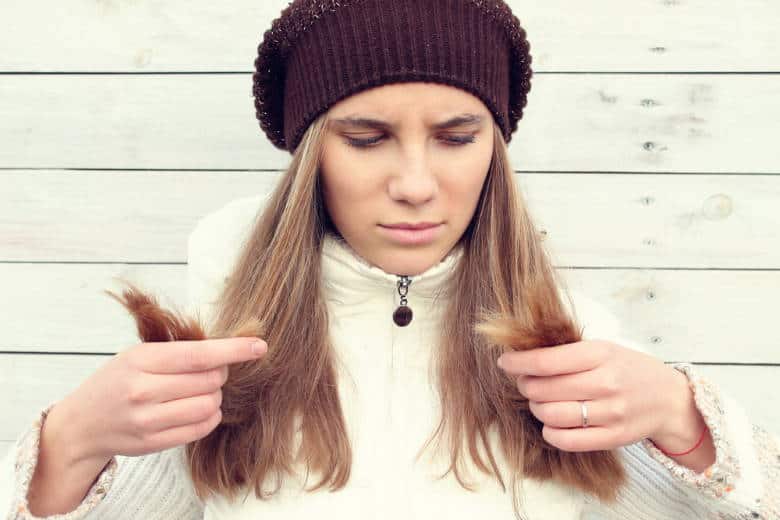When I was a little girl, all I wanted was long, beautiful, healthy-looking hair. Unlike most of my peers, I was subjected to perms and short haircuts from a young age because my mother was convinced that I had fine, lifeless hair.
I’ve since grown my hair out and gotten rid of the awful perms, thank goodness. My quest for maintaining healthy, voluminous locks still goes on though. In this article, I’ll share the various tips and techniques I’ve picked up along the way.
Daily Maintenance
Shampooing and Conditioning Your Hair
It goes without saying that clean hair is part and parcel of having healthy hair. Many people (myself included) wash hair on a daily basis. While it’s important to wash your hair regularly, less is more in terms of keeping your tresses healthy.
Shampooing daily can dry out and damage your strands because it strips your hair of its natural oils and proteins that keep it healthy and vibrant. This is especially true if you use a clarifying shampoo.
Washing every other day or 2-3 times a week is best. Keep in mind that curly and coily hair is naturally drier than straight hair, so go longer between washes if you have natural curls.
Also, make sure to use an appropriate shampoo and conditioner for your hair type.
When shampooing and conditioning, do the opposite technique for each. With shampoo, apply directly to your scalp and massage, but don’t lather the full length of your strands. As you rinse, the suds will naturally cover the length of your hair while you wash the shampoo out.
With conditioner, apply liberally from mid-length down to your ends only, avoiding your scalp. Wait a few minutes for it to sink in and condition your locks before rinsing with cool water.
 Quick Tip:
Quick Tip:
If you don’t want cold water running down your body, step away from the shower head, face down and flip your hair over. Then put the back of your head under the shower so the water flows down and over the top of your head.
Cool water helps seal the outer cuticle layer, which helps keep your tresses strong and shiny. (Conversely, warm or hot water opens it up, exposing the inner cortex and making it look dry and frizzy.)
Shampooing and conditioning with these techniques will keep your scalp from getting overly greasy between washes.
If your scalp produces a lot of sebum, you can also use dry shampoo for oil-control.
Get $5 Off Your First Purchase when you join the Sally Beauty Rewards Program!
Drying Your Hair

After showering, use a clean old t-shirt or microfiber towel to towel-dry your hair. The fibers in regular bath towels are fairly coarse, which roughs up the cuticle layer and causes damage, especially if you rub vigorously.
T-shirts and microfiber towels have a finer knit and are gentler on hair. Use a blot-and-squeeze technique for removing excess water from your strands.
Then, detangle damp hair with either a wide-tooth comb or with your fingers. Grab a section and untangle the ends first before doing a full length comb from your scalp.
Whenever possible, leave your hair to air dry by itself. It saves it from heat damage, so if you regularly blow dry your hair, let it dry naturally on occasion to give it a break.
If you need to blow dry, allow your hair to dry naturally about 75% of the way beforehand and apply a heat protectant. Don’t just spray it on the top layer either – make sure to work it through all your strands evenly.
Lastly, use the warm setting instead of hot to reduce heat exposure, and finish with the cool setting so it doesn’t retain heat.
Brushing Your Hair

Did you know there’s a proper way to brush hair?
With long hair in particular, the last thing you want to do is yank it from top to bottom and call it a day. The best way to detangle hair without damaging it is by gently working through any knots or tangles with a comb before working your way up to a full-length brush out.
This will help reduce breakage and split ends, leaving your hair smoother and healthy-looking.
Do a full brush out both morning and night for optimal results, but don’t over do it during the day.
Also, be extra careful when combing out wet or damp hair. Wet hair is extra fragile, so be gentle and don’t rush the detangling process.
General Health
Diet
While the visible part of your hair is actually composed of dead cells, how well you take care of yourself affects how full and healthy it looks.
Each strand of hair grows out of a single follicle on your skin (you have millions of hair follicles across your body, and about 100,000 of them are on your head). The cells inside the follicle are still live and producing new cells. As these new cells are created, old cells get pushed to the end, which is how hair gets longer.
As the old cells get pushed to the end and away from the follicle, each hair goes through a process called keratinization, where it essentially turns into a protein structure called keratin.
A balanced, healthy diet should cover all the nutrients needed for strong, healthy hair. Since hair is primarily composed of protein, make sure to get enough protein from poultry (chicken or turkey), fish, dairy (eggs, yogurt, milk), nuts, and legumes (beans, lentils, chickpeas).

You’ll also need sufficient iron to nourish your follicles for hair growth. If you don’t, the growth cycle can get disrupted and you may even start shedding hair. Iron-rich foods to consume include dark greens (spinach, kale, broccoli), lean red meat, shellfish, and eggs.
Remember, if your hair looks dull and unhealthy, it will take awhile for any diet changes to have an effect since it can only contribute to new hair cells being created in the hair follicle.
Hydrate
Aside from food, make sure you keep your body well-hydrated with fluids throughout the day.
Humans can survive for days without food, but we can’t survive without water! It’s essential to keep yourself hydrated to keep your body – and your hair – thriving.
Fruits and vegetables contain a lot of water too!
Reduce Stress
Who doesn’t have a stressful life these days? Between family, work (or school), your commute, and of course all those emails/texts/social media feeds, it’s easy to get overwhelmed with everything that demands your attention.
Make no mistake, stress takes a toll on your physical health, and by extension, on your hair. With too much stress, you might start getting grays, growing weaker strands, or even losing hair. Find ways to reduce stress in your life by taking up beneficial practices like yoga or meditation.
Exercise and spending time with friends or loved ones are always good choices too. Unless you’re in a life-or-death situation, try not to take things too seriously. Remember the old adage “laughter is the best medicine” and take it to heart to release stress and boost your immunity.

Hard vs. Soft Water
The water type in your area affects hair health too. Around 85% of the United States has varying levels of hard water, which is water with high dissolved mineral content, especially calcium and magnesium.
These minerals are harsh on your skin and hair. Skin feels dry and is more prone to breakouts or irritation, while hair feels brittle and straw-like after washing with hard water. Hard water also leaves a film, which accumulates with hair product as build up on your strands. The drying effect of hard water can also cause scalp dryness and dandruff.
Soft water, on the other hand, is water low in minerals. You can feel the difference when washing with soap and don’t feel squeaky clean when rinsing because of how soft your skin feels. Soft water makes skin and hair feel soft and moisturized, but can leave hair looking limp and without volume.
If you live in a hard water region, don’t wash hair as frequently, use a clarifying shampoo once a week to remove excess buildup, and consider deep conditioning to keep your hair healthy. If your water is extremely hard, you may want to get a soft water filter for your showerhead.
In soft water areas, use shampoos and conditioners that don’t weigh your locks down, especially on fine or thin hair.
Weekly Maintenance
In addition to your usual hair care routine, there are a couple things you can do on a weekly basis to give your locks some extra love.
Apply a Hair Mask
For dry, damaged, or brittle hair, a weekly hair mask can help strengthen and repair fragile hair.
It’s a deep conditioning treatment involving oils and rich ingredients to deeply penetrate and hydrate hair.
There are a myriad of hair mask products on the market, but you can make one at home if you don’t want to spend money on another hair care product.
Most masks are applied before you get in the shower. You’ll need to wait anywhere from 10-30 minutes for the treatment to take effect before rinsing it out and washing your hair.
This weekly routine is particularly beneficial for dry, damaged, or chemically-treated hair. Make sure to look for or make the right mask for your hair type.
Lighter oils such as jojoba or sesame are great for fine hair, while dry, damaged tresses will need heavier ones such as coconut or olive oil.
Scalp Treatments
With all the focus on healthy hair, we sometimes forget that our scalp is just as important, if not more so. The skin on your head houses all the follicles that actually produce hair, so the better it’s condition, the better the hair that sprouts from it will be.
First, it’s important to know that there are different scalp types, just like there are different hair types. Skin, and therefore your scalp, can be categorized into four groups – normal, oily, dry, or combination.
If your scalp isn’t red, flaking, itchy, or otherwise irritated, congrats! Keep on doing whatever your regular scalp and hair care routine is.
It’s when you have either oily, dry, or combination scalp that you might need some sort of treatment to help relieve itchiness or dandruff. Even if you have normal skin, you might need scalp care if it’s irritated by chemical treatments to your hair, or even some ingredients in your shampoo.
Unless you have a specific skin condition, an itchy, flaky scalp is usually a sign that it’s dry and needs moisturizing. Try using a dandruff shampoo a couple days a week, or one of these natural scalp treatments.
Interestingly, if you have an oily scalp, a lot of the same treatments used to treat dry scalp will also help, especially natural pH-balancing ones like an apple cider vinegar rinse.
In addition to topical treatments, scalp massages are beneficial for blood circulation, which in turn stimulates the follicles to produce healthier hair. Doing so has other health benefits too, including reducing stress and headaches naturally.
Monthly Maintenance
Get Regular Trims
Depending on your hair, you’ll want to get regular trims – whether that’s monthly or every 2 to 3 months – to keep split ends at bay and your hair looking healthy.
Remember that hair grows from your scalp, so while regular trims won’t make your hair grow faster, it will keep it healthier and easier to maintain.
Do an Apple Cider Vinegar Rinse

One low-cost maintenance way to naturally clean and condition your hair is with apple cider vinegar (ACV). Generally speaking, doing an ACV rinse once a month is great for most hair. Some hair types even benefit from doing it more often.
(Don’t worry, your hair won’t smell like apple cider vinegar once it’s rinsed with water and dries.)
There are several reasons why apple cider vinegar is beneficial:
- It’s acidity helps restore the proper pH balance to your scalp and locks
- It removes product buildup from hair, leaving it smoother and shinier
- It has antifungal and antibacterial properties that help treat itchy scalps and dandruff
Making an ACV rinse is easy and budget-friendly. Look for raw apple cider vinegar the next time you go food shopping at your local grocery store.
Simply mix 2 tablespoons with 16 oz. of water and voila! You’ve got yourself an ACV rinse. Note that the drier your hair is, the more you should dilute the vinegar with water and vice versa for oily hair. You can also add a few drops of lavender oil if you like.
Take the mixture with you into the shower, shampoo, and rinse your hair normally. Then, gently pour it over your scalp and hair as evenly as possible and let it sit for 2-3 minutes before washing out.
You shouldn’t need to apply regular conditioner afterwards since the ACV rinse acts like a natural conditioner. However, if necessary (or if you’re super-paranoid that your hair smells of vinegar), you can apply a bit to your ends after you’re done with the ACV rinse.
Seasonal Maintenance
Just like the rest of your body, the seasons affect how your hair looks and feels. In winter, hair gets drier and is more prone to brittleness and breakage, both from the cold outside as well as dry heat indoors. It tends to lose it’s natural sheen, and colored locks may also fade.
In the summer, being out in the sun exposes your hair to damaging UV rays, not to mention chlorine and salt water from pools and the beach.
So how can you protect your hair from seasonal extremes?
Winter

One of the simplest ways to protect hair during the colder months is to wear a hat. It’ll do double duty by keeping your head warm in addition to protecting your tresses from the elements.
Use oil to keep hair moisturized and supple, especially on your ends. To hydrate dry, brittle strands, massage your scalp and hair with coconut oil before getting in the shower, or mix olive or jojoba oil into your conditioner and apply after shampooing.
When blow drying or styling your hair, use as little heat as possible.
Lastly, keep your body hydrated! This includes getting enough liquids in your body, as well as in the air around you (i.e., use a humidifier to counteract the drying effect of heated homes).
Summer
Hair protection in the summer doesn’t actually differ too much from what you should do in the winter.
During the warm months, your hair is exposed to a lot of the sun’s rays when you’re out enjoying the weather, so try wrapping it with a scarf or wear a sunhat. (Just as for your skin, UV light is bad for your hair too.)
You might even want to go so far as to put sunscreen on your hair. (I’d never heard of this before, to be honest.)
Keep heat drying and styling to a minimum, and if you’re dying for the just-out-of-the-ocean look, use a sea-salt spray to create that beachy texture.
When tying your hair up in a ponytail or updo, don’t pull too tightly. Try looser styles that don’t create so much tension and damage to your strands.
This might be counterintuitive, but don’t wash your hair too often in the summer. Frequent shampooing strips your hair of its natural oils, so just rinse it with water after being in the pool or ocean. To keep excess oil at bay, use a dry shampoo, corn starch, or baby powder on your scalp between washes.
Lastly, the trusty ACV rinse is particularly beneficial in the summer – it helps gets rid of product buildup as well as the green hue chlorine leaves behind on blonde hair.
Bye Bye, Bad Hair Days
Well, there you have it! You can have beautiful, healthy tresses every day, all year-round, with proper care and the tips discussed in this post.
While you might have known some of the recommendations already, hopefully you’ve come away with a better understanding of what, when, and how to care for your tresses so you can say goodbye to bad hair days for good.
Thanks for the nice information